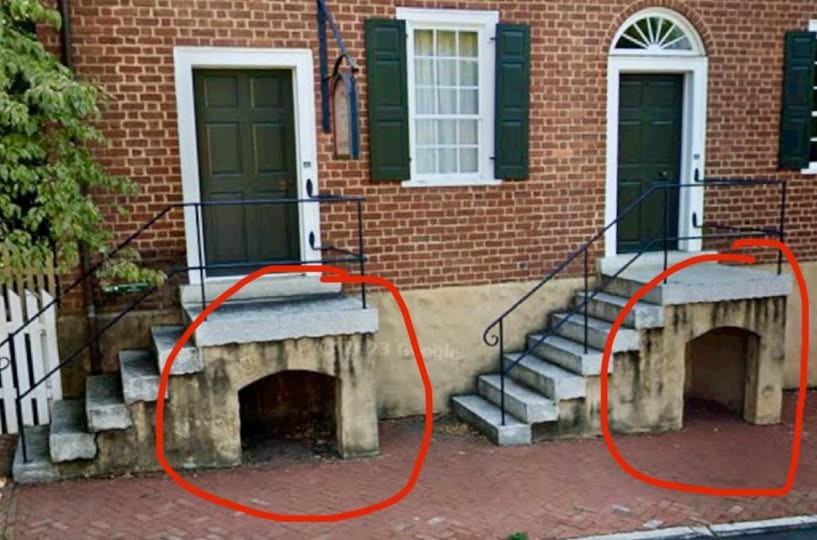If you’ve ever strolled through historic neighborhoods in cities like Boston, Charleston, or Philadelphia, you might have spotted a curious feature under the front steps of old rowhouses—a bricked-up arch or a small chamber tucked beneath the stoop. These aren’t just random quirks; they’re called stoop vaults, and they reveal a fascinating piece of urban history from the 18th and 19th centuries, when homes were designed with clever solutions for everyday needs.
Back when cities had poor drainage, many homes were built with raised entrances to avoid flooding, leaving a hollow space under the front steps. These areas, often made of brick or stone, were turned into stoop vaults for practical storage. Their main use was holding coal, the go-to fuel for heating homes and powering stoves during the World War I era. Coal was delivered through a sidewalk hatch, dropping straight into the vault, keeping the messy fuel out of the house while making it easy for families to access.

In tightly packed urban areas with limited space, stoop vaults were a lifesaver. Without big basements or yards, families used these nooks to store firewood, tools, or seasonal items, keeping homes tidy and essentials close. As modern heating like gas and electricity became common, these vaults were often sealed or forgotten. Yet, in historic neighborhoods, they remain as subtle clues to the past, like the arched vaults under rowhouses shared in a Reddit post, or a Bremerton, Washington, homeowner’s vault, rediscovered in the 1990s and now used for firewood after drainage upgrades.
These small spaces carry big stories about how people lived. They show a time when every part of a home had a purpose, and heating meant hauling coal instead of flipping a switch. Today, some homeowners preserve these vaults as historic gems, while others repurpose them for modern needs like storage or garden beds. Each vault is a snapshot of ingenuity, reflecting how families adapted to city life’s challenges.
Next time you pass a rowhouse and notice a small arch or sunken space under the steps, take a moment to appreciate it. That little vault once kept a family warm through harsh winters, and now it stands as a quiet reminder of a time when architecture was all about solving real-life problems with clever, practical design.


